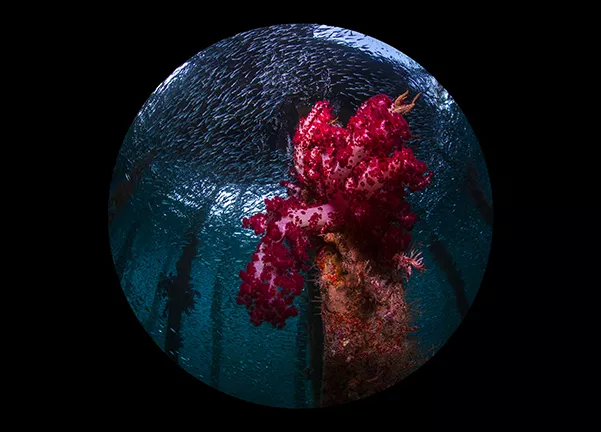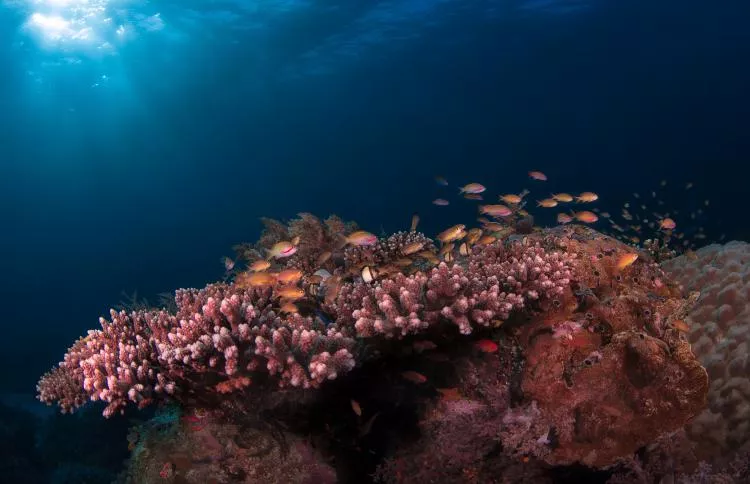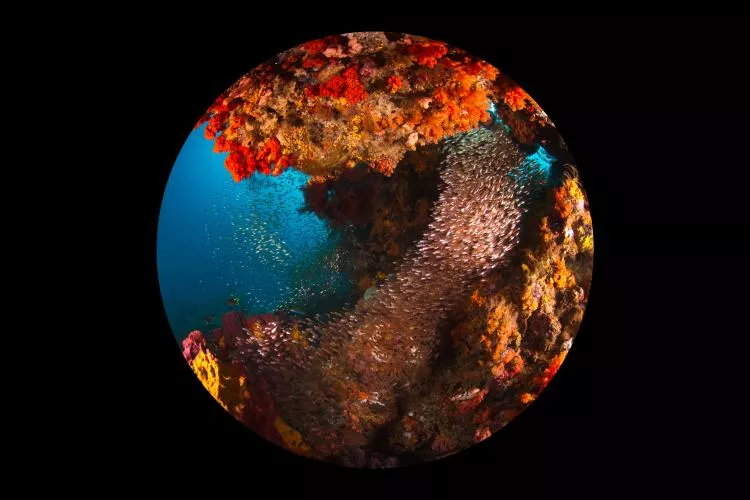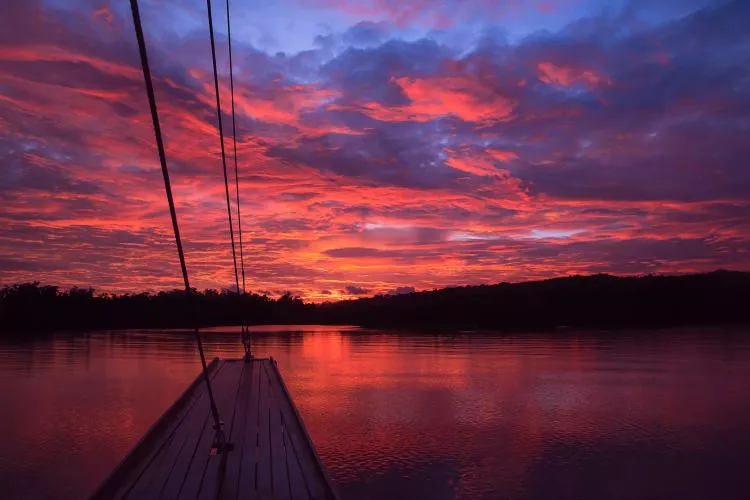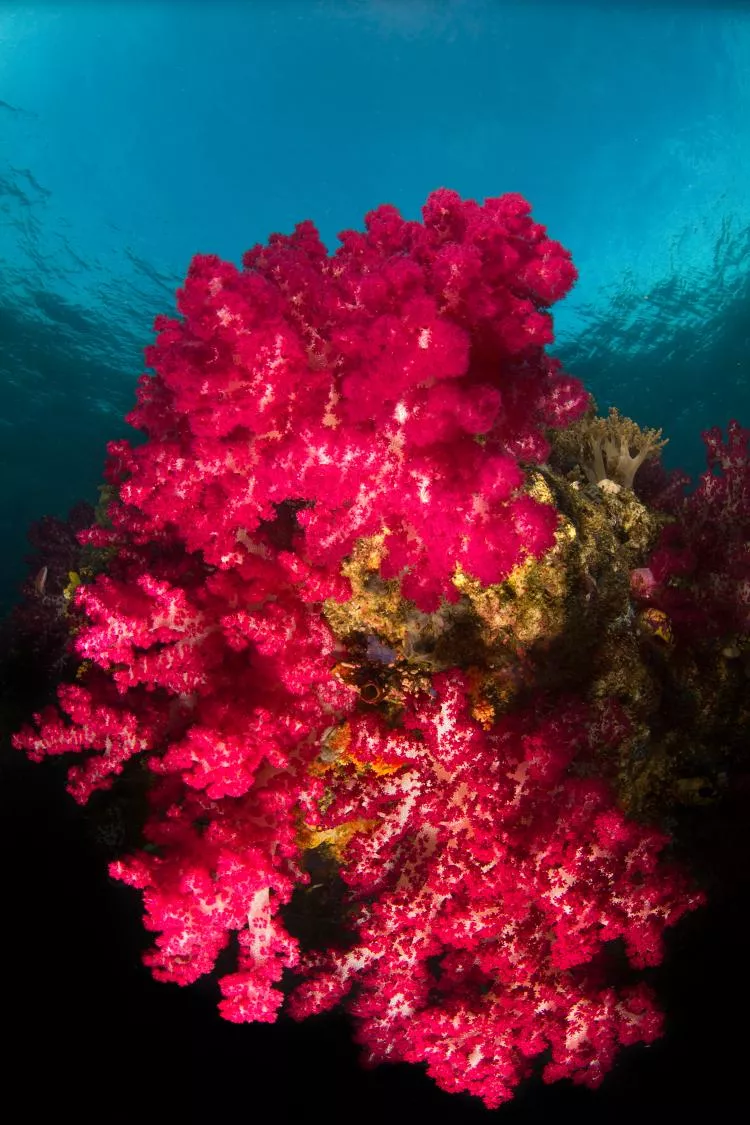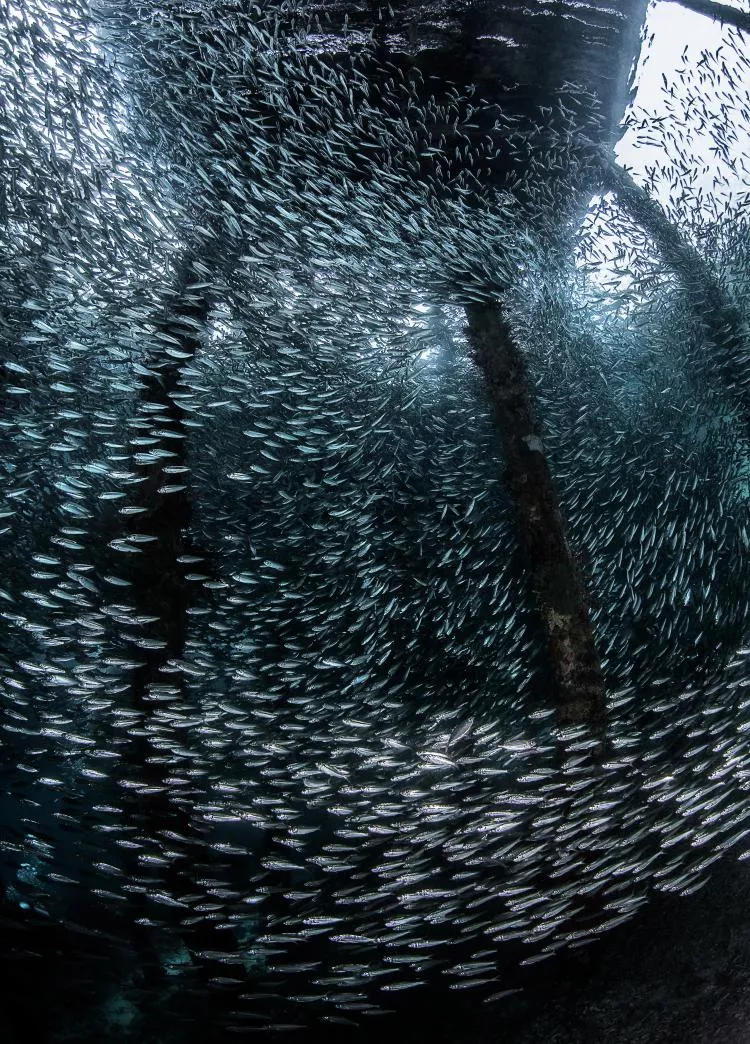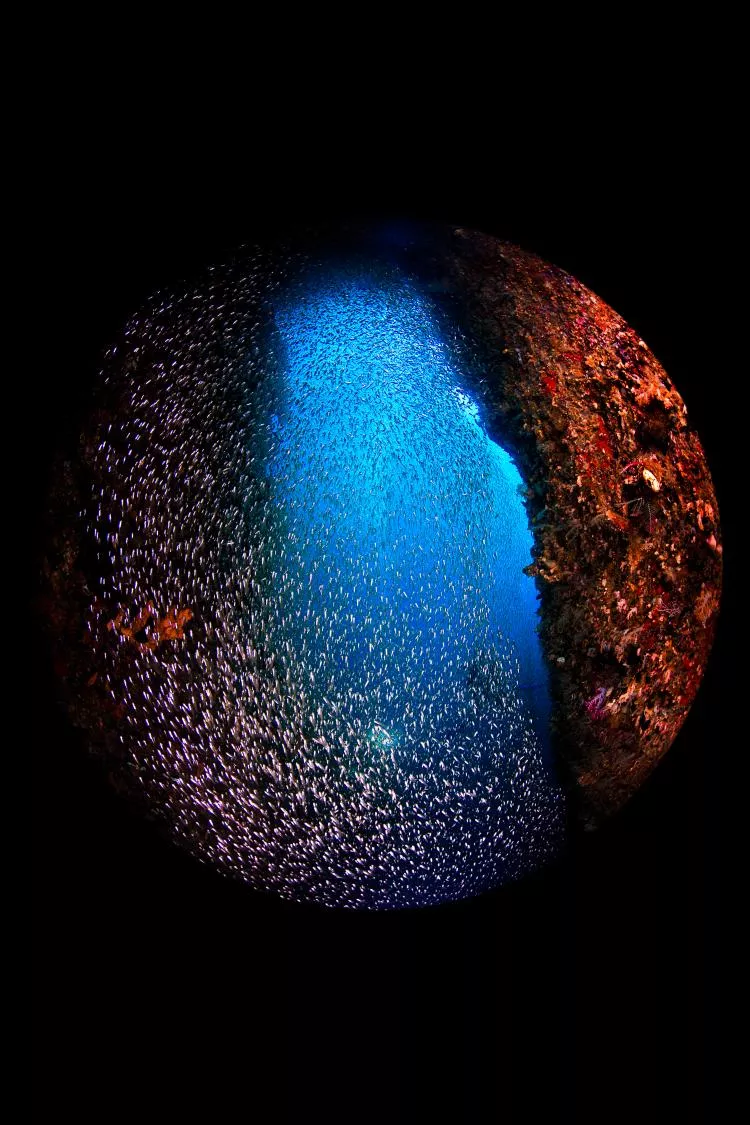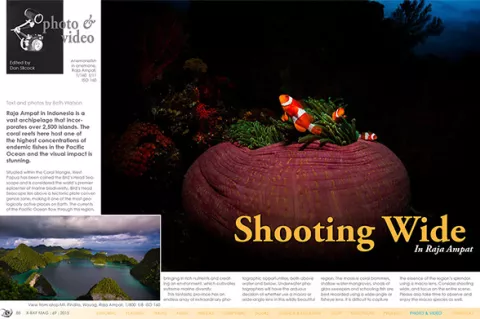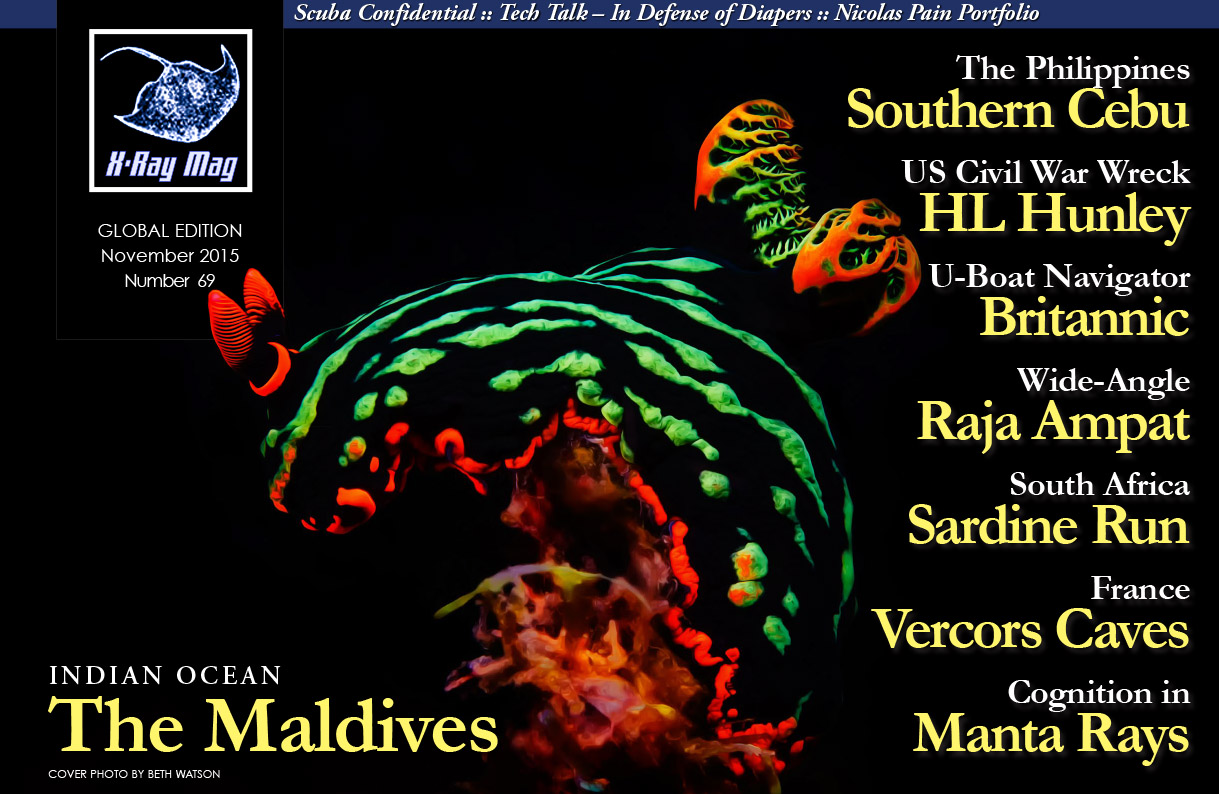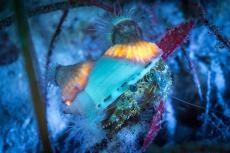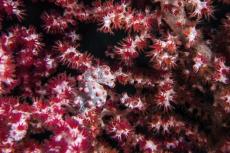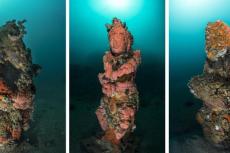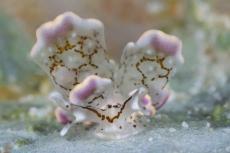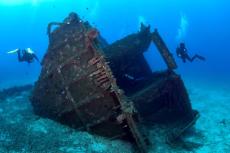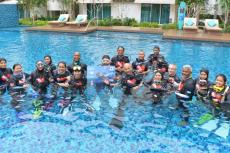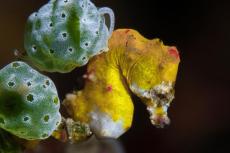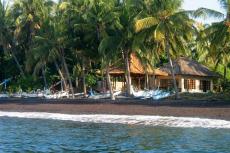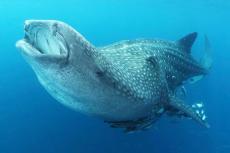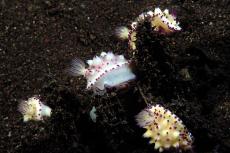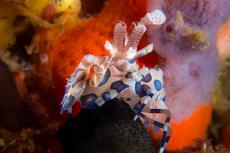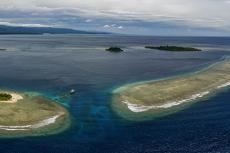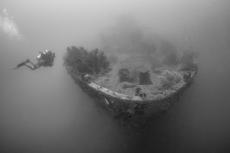Raja Ampat in Indonesia is a vast archipelago that incorporates over 2,500 islands. The coral reefs here host one of the highest concentrations of endemic fishes in the Pacific Ocean and the visual impact is stunning.
Contributed by
Situated within the Coral Triangle, West Papua has been coined the Bird’s Head Seascape and is considered the world's premier epicenter of marine biodiversity. Bird’s Head Seascape lies above a tectonic plate convergence zone, making it one of the most geologically active places on Earth. The currents of the Pacific Ocean flow through this region, bringing in rich nutrients and creating an environment, which cultivates extreme marine diversity.
This fantastic province has an endless array of extraordinary photographic opportunities, both above water and below. Underwater photographers will have the arduous decision of whether use a macro or wide-angle lens in this wildly beautiful region. The massive coral bommies, shallow water mangroves, shoals of glass sweepers and schooling fish are best recorded using a wide-angle or fisheye lens. It is difficult to capture the essence of the region's splendor using a macro lens. Consider shooting wide, and focus on the entire scene. Please also take time to observe and enjoy the macro species as well.
Composition
Wide-angle photography bring about its own set of unique challenges. Creating impactful, colorful and sharp images require thought and preparation. There are several variables that need to be considered when photographing underwater wide-angle scenes.
Scan the reef and water column, looking for visual impact. A good composition will engage the viewer, whether it is simple or complex. Sometimes, the “less is more” theory works well. Bird’s Head Seascape is often an underwater extravaganza. There can be so much action that it becomes difficult to know where to look, and much less what to shoot.
After the decision has been made on what to shoot, some factors need to be considered before setting up for the shot. In what direction is the sun shining? Which direction is the current running? How much air is left and what is my depth? Do I have proper buoyancy to capture the shot? After these questions are answered, proceed with your camera settings, strobe positioning, etc. Practice this sequence often, it won’t take long before this becomes second nature, and the questions and answers will come quickly. The result will be improvement in photography and diving skills.
A few lucky people have a natural eye for composition while others often struggle. Visualize the final image before it is captured. Look at the works of other photographers whom you admire. What do you like and dislike about their images? What draws your attention? Is it the color, subject, lighting, lens choice or composition? Don’t emulate other photographers; take what is inspirational, build on that, practice and create your own style of photography.
Camera settings
It is important to know what camera and strobe settings are dialed in before you enter the water. This will facilitate quicker adjustments underwater, improving your chances of not missing the shot. A good starting point for camera setting would be f/11, 1/100, ISO 100-160. Once in the water, meter the water and adjust accordingly. Set the focus point 1/3 up from the bottom of the scene. This will provide good overall clarity and depth of field for the image.
The background color and brightness is controlled by the shutter speed. The higher the shutter speed, the darker the background. If a blue background is too dark, lower the shutter speed to create a background with lighter shades of blue. However, if there is a moving subject in the frame, a minimum shutter speed of 1/100 to 1/125 is required to freeze the action. If the shutter speed is increased, it may be necessary to raise the ISO to compensate.
Artificial light
Lighting wide-angle scenes can be challenging. It takes time, patience and, most of all, practice. Balancing ambient light with artificial light can be a hurdle for those new to the technique. When lighting wide-angle scenes, several variables need to be taken into consideration. The position and strength of the sunlight, distance to subject, strobe power and camera settings all contribute to the end result. Shooting a scene that is parallel to your camera lens will enable the entire scene to be evenly lit. Otherwise, the strobes will not reach the distant areas of the image, resulting in diminished colors and dark spots. Use a diffuser on the strobes to soften and spread the light for even distribution.
For wide-angle images, longer strobe arms are ideal as they will add more lighting coverage. However, this does not necessarily apply to super wide-angle lenses, such as the Canon 5-15 fisheye lens. If long arms are used, it may be necessary to draw them in. Otherwise, the strobe light may not reach the center portion of the image, causing a dark spot. A solution would be to place a third strobe above the camera.
To prevent strobe flare and backscatter, extend the strobes behind the camera lens and angle them outwards. This is especially crucial when using a fisheye lens. Another technique is to position the sun behind you and adjust the strobes above the camera at the 10 and 2 o'clock positions. Aim the strobes in the same direction the sun is shining through the water. This will mimic the sun and add additional light on the subject. Experiment with different strobe positions to find out what works best for different situations.
A good starting point for strobe power is 1/4. Most wide-angle scenes can be adequately lit without cranking up the strobe to maximum power. Dial in the strobe settings manually instead of relying on TTL . It can be difficult to properly expose a wide-angle scene using TTL.
Ambient light, reflections & silhouettes
Eye-popping, colorful images can be achieved with ambient light. To get good color in your shots, shoot with the sun behind the camera and close to the surface. Less color absorption will take place in shallow water, creating colorful, sharp and detailed images.
Reflections are fun and easy to shoot. Be creative and think outside of the box. Reflections can be inspiring and thought-provoking. Experiment with shooting in shallow water near the surface. Angle the camera until the reflections are visible in the viewfinder. The calmer the water, the more mirror-like the effect will be.
Silhouettes are captured by positioning the subject in front of the sun or light source. Attempt to cover up the entire light source with the subject. Be careful not to over-expose the highlights. Faster shutter speeds are required to stop moving subjects, creating a sharper image. A silhouette image can be dynamic, compelling and will most likely benefit from a black and white conversion. All these considerations will impact decision-making, camera settings and the camera angle.
Dappled light
Approximately one hour before sunset, sunlight will begin to shimmer and dance through the water column. This daily short-lived phenomenon is known as dappled light. To capture this magical light, it's best to shoot in shallow water, 10 meters or less. A higher aperture setting will create a sharper, crisper image. Adjust the ISO or shutter speed to compensate for dark images. It is good practice to check the histogram, evaluate and make sure the highlights have not been overexposed. Provided the sun is overhead, dappled light is visible for a short period every day. Be prepared and find the subject/compostion early in the dive. Experiment with camera and strobe settings to find the optimal combinations before the light condition reaches its peak.
Snell’s Window
Another interesting shooting technique is incorporating Snell’s Window into an image. This is present at every dive and can be seen by looking up at the surface. It shows up as a bright circle directly overhead; the water outside the circle is usually darker. Refraction of light entering the water causes this intriguing phenomenon. When the water is calm, navigate close the surface and a portion of the sky or shoreline can be seen from below. Position, then angle the camera until the sky or shoreline is visible in the viewfinder. Unveil your creativity and experiment with composition and lighting.
A shallow area with interesting topside scenery is a perfect location for shooting Snell’s Window. Throughout Bird’s Head Seascape, trees and foliage line the shoreline, protruding out over the waters. The dive sites Yeben Shallows and The Passage offer great photo opportunities.
Over-Under
Another term for an over-under image is split-shot. Here, a single frame contains both an underwater and topside subject. It is best to use a fisheye lens with a large dome port. Crank up the aperture, up to f/16 for DSLR's and f/11 for compacts; this will ensure that the entire scene is in focus. If the image is too dark, increase the ISO or slow the shutter speed. Strobes are typically used to light the underwater portion of the image. Meter and expose for the top-side portion, put the focus on something underwater for best results. To prevent water droplets from forming on an acrylic dome port, rub shampoo or RainX on the port before the dive and rinse it off in the water. Another technique is to spit, rub, dunk, and shoot. Be quick, as water droplets can form on the port after a couple of seconds. Glass dome ports aren’t as susceptible to water droplets as acrylic ports.
Conclusion
Diving Bird’s Head Seascape is a wonderful experience, both above water and below it. The photographic opportunities are truly remarkable, from schooling fish to amazing coral bommies, and everything else in-between. It’s a destination that begs to be re-visited.
Take it to the next level. Trial and error is intrinsic to improving photography skills. Learn from mistakes. It may require many captures and discards before the next printworthy image is created. Be a visionary—if you see it, you can shoot it!
Tips & Tricks
- Include a diver in the scene. This adds interest, scale, and gives the viewer a sense of “being there”.
- Take control of the camera. Try shooting with manual settings.
- Void/Negative space is a welcome element in image composition.
- Always shoot in RAW, if possible. This will allow for non-destructive editing practices.
- Don’t sweat over the white balance of an image, as this can be easily corrected in post-processing.
- Look at other photographer's works and learn from them.
- Be creative and think outside of the box. Try new techniques.
- Venture outside your comfort zone.
- Expect the unexpected.
Beth Watson is an awarding-winning, internationally published underwater photographer based in the US state of Missouri. For more information, visit: www.bethwatsonimages.com.


